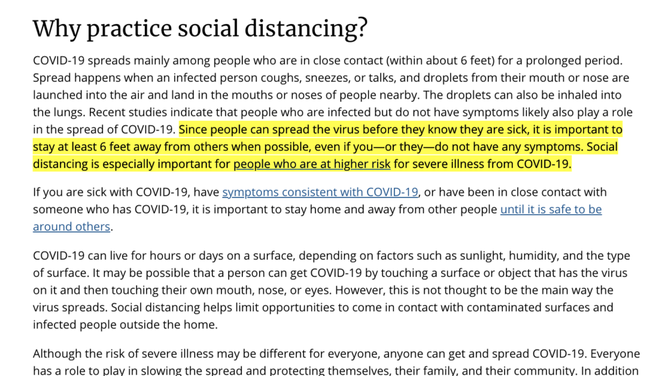MIT Researchers Say Risk of Contracting COVID Indoors is the same at 6ft and 60ft
Researchers at the Massachusetts Institute of Technology say the risk of contracting COVID-19 indoors is the same when socially distanced at 6-feet apart and when 60-feet apart.
Professor Martin Bazant, who teaches chemical engineering and applied mathematics at MIT, told CNBC that the 6-foot rule “really has no physical basis because the air a person is breathing while wearing a mask tends to rise and comes down elsewhere in the room so you’re more exposed to the average background than you are to a person at a distance.”
CNBC reports that Bazant and MIT professor John W.M. Bush, who teaches applied mathematics, developed a method of calculating exposure risk to Covid-19 in an indoor setting.
The research article, published earlier this month, details their method which factors in a variety of issues that could affect the transmission, including the amount of time spent inside, air filtration and circulation, immunization, variant strains, mask use, and even respiratory activity such as breathing, eating, speaking or singing.
“We argue there really isn’t much of a benefit to the 6-foot rule, especially when people are wearing masks,” Bazant said in an interview with CNBC. “It really has no physical basis because the air a person is breathing while wearing a mask tends to rise and comes down elsewhere in the room so you’re more exposed to the average background than you are to a person at a distance.”
Bazant said that guidelines enforcing indoor occupancy limits are flawed and the important variable the CDC and the WHO have overlooked is the amount of time spent indoors.
“What our analysis continues to show is that many spaces that have been shut down in fact don’t need to be,” Bazant told CNBC.
He said social distancing rules that are leading to businesses being closed "are just not reasonable.
"Often times the space is large enough, the ventilation is good enough, the amount of time people spend together is such that those spaces can be safely operated even at full capacity and the scientific support for reduced capacity in those spaces is really not very good,” Bazant said. “I think if you run the numbers, even right now for many types of spaces you’d find that there is not a need for occupancy restrictions.”
Both the Centers for Disease Control and Prevention and the World Health Organization recommend maintaining a 6-foot distance from others, specifically in indoor settings.
The CDC's website states it’s important to maintain social distance even if you or the other person doesn’t have symptoms because "COVID-19 spreads mainly among people who are in close contact (within about 6 feet) for a prolonged period."

Highlighting added by the CDC. Courtesy of the CDC's website.
The CDC dropped the distancing guidance to 3-feet for classroom settings in March.
The research article, "A guideline to limit indoor airborne transmission of COVID-19," published in Proceedings of the National Academy of Sciences of the United States of America at the beginning of the month can be read here.